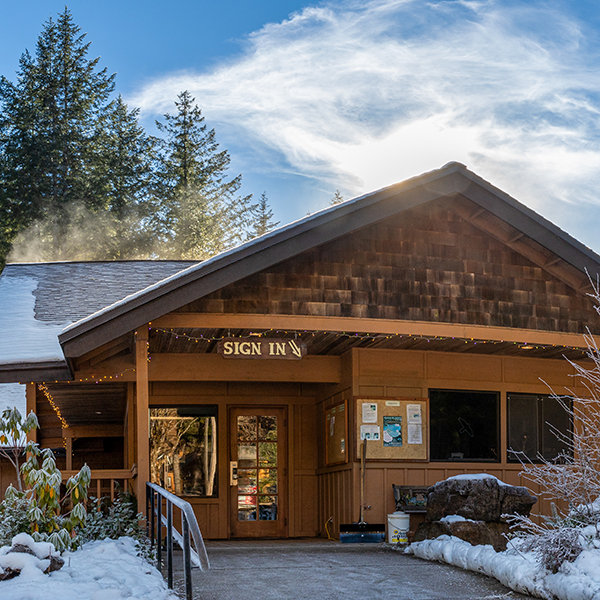H.J. Andrews Experimental Forest

The H.J. Andrews Experimental Forest was established in 1948 by the U.S. Forest Service and has become one of the most studied forest ecosystems in the world. Unique in its attention to long-term study, the site has been part of the National Science Foundation’s Long-Term Ecological Research program since 1980.
The 15-thousand acre forest in the Western Cascades encompasses the watershed of Lookout Creek, which flows into the Blue River, a tributary of the McKenzie River. It includes mountain ridges over five thousand feet in elevation, deep valleys, fast-flowing streams and many old-growth stands, with some trees exceeding five hundred years old. A rich and varied body of science and data have emerged on streamflow, water quality, vegetation succession, forest management, climate change and other research topics, with some studies ongoing for decades.
Yet at Andrews, among the towering old-growth and a moss-cloaked understory, salal and sword fern, vine maples, lichens and liverworts, stories are as important as data—and reflection is as important as research. Through the Long-Term Ecological Reflections program, the Andrews has hosted more than one hundred writers, artists, visiting musicians and scholars, whose works make up a growing cultural data set collected in an online catalog called The Forest Log. In both scientific and creative inquiry, this is a place that embraces great experimentation, collaboration and imagination.
Details
- Residents stay in a comfortable apartment with a fully equipped kitchen, including a range/oven, coffee maker, toaster, microwave and refrigerator.
- Private apartments available for individuals and multi-bedroom “quads” available for affinity groups.
- Wireless internet and WiFi calling in all apartments. No cell service. If you anticipate making long-distance calls, bring a prepaid card for the public phone at the headquarters building.
- Residents provide their own transportation, food and laptop. Bedding, towels and basic cleaning supplies provided.
- Onsite laundry room with coin-operated washer and dryer.
- Access to a computer room with printers, office space and library.
- Opportunities to engage with scientists or field crews if desired.
- Extensive forest road network and area hiking trails, including Lookout Creek Old Growth Trail and Carpenter Mountain Lookout Trail.
- Special access to Reflections Plots—sites of significant natural and research interest.
- Residents should plan to arrive during weekday business hours to check in at headquarters.
- Detailed information, a safety guide and an in-person orientation to the forest will be provided at the start of each resident’s stay.
Opportunities
Long-Term Ecological Reflections Residency
Public Humanities Collaboratory
PRAx designs residencies around the unique needs of each participant, including accessibility for individuals with disabilities in keeping with OSU’s commitments. For questions related to accessibility and accommodations, please contact Joy Jensen at [email protected].











